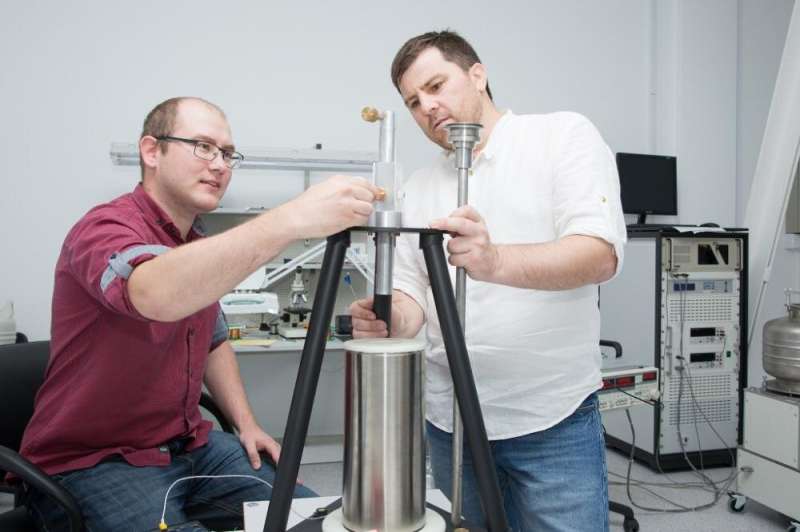Physicists create metallic alloy for magnetic refrigerator

Physicists at the Laboratory of Novel Magnetic Materials of the Immanuel Kant Baltic Federal University study magnetic materials and magnetostructural phase transition in order to create a new magnetic cooling technology. They have studied the properties of manganese and arsenic alloys that have magnetocaloric characteristics.
It is a well-known fact that common refrigerators use freon, which is not environment-friendly. This gas is harmful to the ozone layer and causes a greenhouse effect. Alexander Kamantsev, a researcher of the Laboratory of Novel Magnetic Materials (IKBFU) notes, "We have discovered that the manganese-arsenic alloy is one of the best to use in the technology of solid state magnetic cooling at room temperature."
The results of the study were published in Journal of Alloys and Compounds. Co-authors of the study are the researchers from the Immanuel Kant Baltic Federal University and their colleagues from Donetsk Institute for Physics and Engineering named after A. A. Galkin, MISIS National University of Science and Technology, Indian Institute of Technology Madras, Wroclaw University of Science and Technology and the Kotelnikov Institute of Radioengineering and Electronics of Russian Academy of Sciences.
More information: Yu.S. Koshkid'ko et al, Giant reversible adiabatic temperature change and isothermal heat transfer of MnAs single crystals studied by direct method in high magnetic fields, Journal of Alloys and Compounds (2019). DOI: 10.1016/j.jallcom.2019.05.246
Provided by Immanuel Kant Baltic Federal University




















